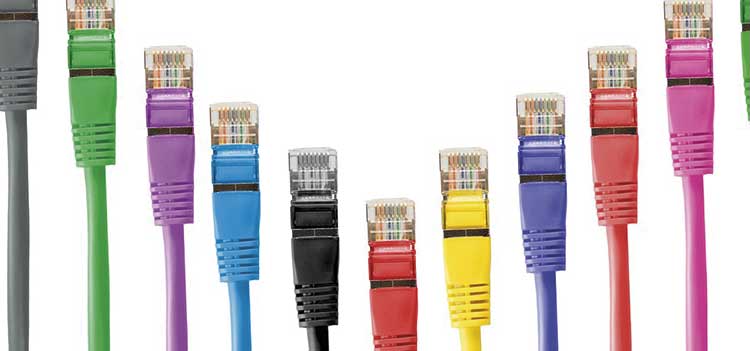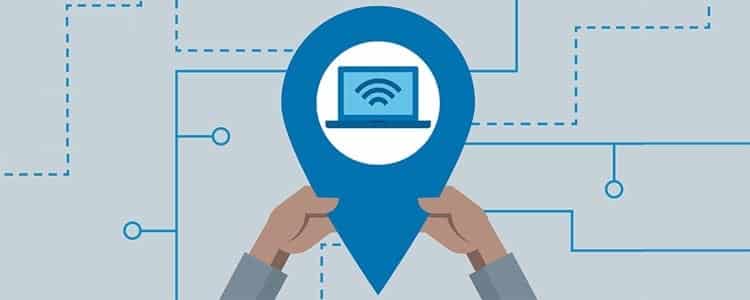La Red lan It was born as a necessity to be able to share computer resources such as your files and your physical devices. Of these, for example, printers between various computers located in a certain area stand out.

LAN is an acronym for the English expression Local Area Network or "local area network" in Spanish. The arrangement of physical connections is called "Network topology», term also applied to logical structures configured for the interconnection between equipment.
Article Content
Types of topologies
There are many types of topologies within the LAN and we will limit ourselves to describing the main ones, since the others are combinations and variations of these.
Bus topology
It is the most basic. Consists in a single transmission line where the computers you use will appear connected one after the other. It is the simplest structure to implement of all. It is bidirectional and the data travels sequentially between node and node, which is why it presents an obvious disadvantage if your line breaks. It also causes problems data traffic and collisions.
In conclusion, its main advantage is the simplicity of implementation and, currently, it is little used in the professional field.
Ring topology
This type is formed by joining the ends of your bus line, thus creating a closed ring. Your data in this topology will flow in one direction from node to node. Each computer receives and forwards data packets that are not intended for it. The process is repeated until the data reaches the recipient computer.
Obviously, a cable failure interrupts the system, as well as the failure of any node can completely ruin your system. network system.
Tree topology
This network variant consists of a main bus with its nodes, from which other buses with their respective nodes hang or can hang. In this way a tree figure is created. The tree is quite similar to the topology star, based at the same time on the topology bus.
In this case, it is the main bus that carries your data to all the nodes, in such a way that the failure of one does not prevent it from being transmitted to the subsequent nodes, being able to take your information to its destination.
Star topology
This structure differs from the previous ones in that all the nodes converge at a central point called host, which works as a kind of telephone switchboard that manages the connections between the nodes.
El host, in reality, is a server dedicated to channeling data between different nodes, whether exclusively or not. It can be a switch, a router or a computer configured to the case. This topology is very reliable in that, if one node fails, this does not interfere with communications between the rest and can guarantee the transmission of data.
Mesh topology
It is called this when each node is simultaneously connected to other nodes, thus forming a kind of mesh or fabric. If you look at this plot, you will realize the possibility of transfer data between two given nodes by different routes and alternate. This feature gives great robustness to your network in the event of massive failures in its nodes or communication lines due to catastrophic failures that destroy them massively.
This type of network is very secure, but requires more complex communication protocols, since information packets will arrive via different routes at different times. The first package may arrive after the last one you sent because they followed different paths.
Hybrid topologies
In real world applications, The most common thing is to find various combinations of network topologies. It can be the result of the addition of new networks over segments of previous networks, the reuse of cabling, switches, routers and other components. You have probably also used combinations due to your specific needs or structural limitations.
As you have surely sensed, the Internet is the best example of a hybrid topology made up of hundreds of thousands of LAN networks of very diverse topologies, with dissimilar speeds and extensions of varying magnitudes. It also has various transmission media such as coaxial cables, twisted pair, fiber optics, radio waves, infrared rays and ultrasound. For this reason, it is not known as the “network of networks” for nothing.
Logical topology

Below we show you its variants.
Broadcast topology
The diffusion topology (Broadcast in English) is a logical topology independent of the physical configuration of the system. It consists of sending the data to all accessible nodes in the network. There is no established order for stations to transmit, so they do so on a first-come, first-served basis.
If you have networks Ethernet, your connection will work under this logical topology.
Token transmission topology
In this Topology, like a relay race, the witness, token, between the different nodes. Only the one in possession of it will be able to transmit data and then move on to the next node. In case the node does not have any data to send, the witness is passed to the next node, repeating the cycle indefinitely.
This technology is used by data networks distributed over fiber FDD, token ring and Arcnet.
A recommendation
A vulnerability that you should take into account is that, by depending on a central node (host), a failure or compromise of yours will affect the entire system. The access of hackers or virus router It makes all nodes vulnerable, as well as the traffic between them and the external network (Internet).
Last year, a new aspect of exploitation of weaknesses was detected in routers of a certain brand, which were infected with a script de cryptojacking that used network resources to carry out crypto mining. Although the goal is not to damage your system or steal your data, the extra activity generated by the script impairs the functioning of your network. To solve it, you must update router firmware to the latest version.
With the current elements, you can build any network according to your needs and possibilities. For now, the most efficient technology for you to build a network LAN is the ethernet, due to its greater speed and reliability and also its relative low cost.


Intellectual Property & Technology transfer Manager at Autonomous University of Barcelona




